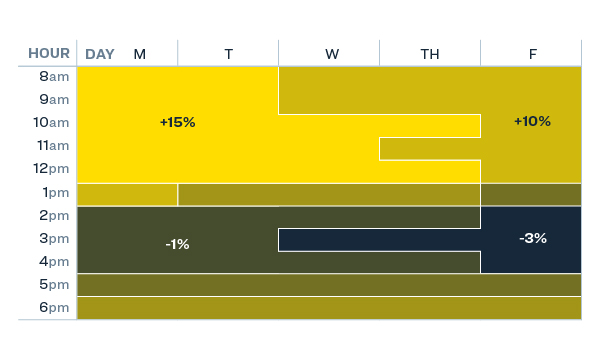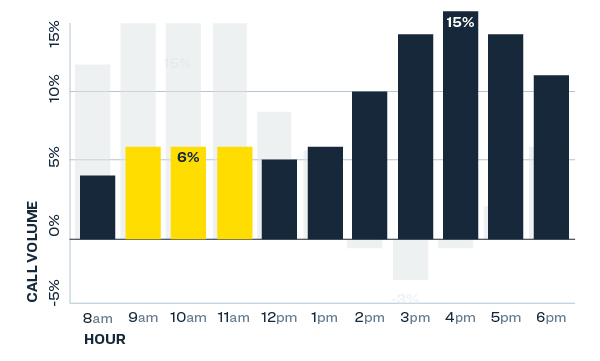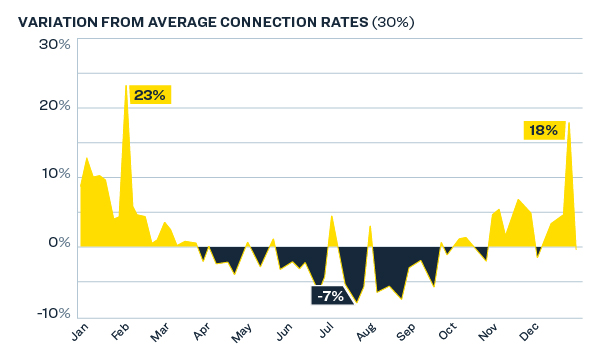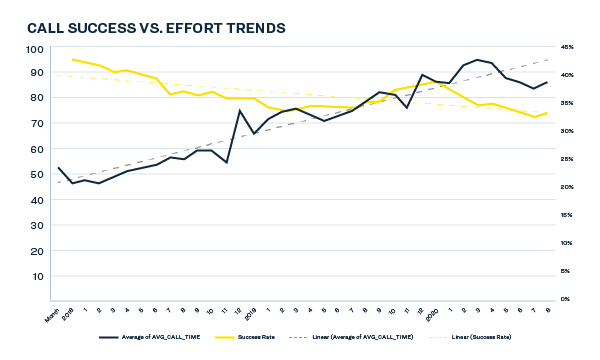When to Prospect Research Brief
Salespeople instinctively believe there must be an optimal time to reach out and contact prospects. Their gut leads them to construct sales plays that target different times in hopes of eliciting a response. These plays contain a series of tasks that are scheduled at subjective or arbitrary times. However, the data to support these practices have rarely been systematically observed and rigorously analyzed outside our original Lead Response Study (citation). With the rise in mobility and the concurrent onset of WFH policies, what does the data show?
Data Set
Playbooks is the leading enterprise sales engagement platform that guides sellers through their engagement with buyers, in part by brokering calls, sending emails, and otherwise automating a large number of sales activities. The platform anonymizes collective data on activities and outcomes and employs AI to produce insights into the behaviors of buyers, or Buyer Intelligence™.
For this study, we pulled a sample from our collective data of approximately 30 million outbound calls, collected over 2.5 years (2018-2020), and generated by over 10 thousand users in North America. The sample contains 30% success defined by a reps’ disposition indicating ‘correct contact’, and 70% contact failures. Calls occurred in all major time zones.

What Does the Data Say About When To Prospect?
The findings are striking in their simplicity and application for sales practice. Whereas the bulk of prospecting calls are made in the afternoon hours (3X higher), calling in the mornings through noontime prospect local time yields an abnormal contact rate of 15% higher in the AM vs. PM. For perspective, for every 100 calls made, at a baseline contact rate of 30%, sales orgs would achieve a boost of about 5 conversations. And to achieve this benefit sales reps need to overload their morning hours with calling activity while pushing other items (demos, meetings, admin) to the afternoons.

Graph 1: Variation from average, or baseline, connection rates by day and time block

Graph 2: Prospecting attempts volume by hourly blocks; highest performing time blocks in yellow, but they’re near the lowest in attempts made
Additional Insights for Effective Outbound Prospecting
Sales leaders would do well to understand the following benefits from aligning the timing of their revenue team’s outbound prospecting practice.
- Early week contact rates are superior on Monday and Tuesday AM times
- Afternoon times are subpar on most days with Friday PM as the worst time
- Lunch hour on most days performs more like AM than PM times
- Late day times are better than early to mid-afternoons
Overall, prospecting is more efficient when overloaded in the morning or late afternoon hours. These empirical findings comply with most sales leaders’ intuition, though with higher specificity. When combining these findings with sales automation technology like XANT Playbooks, the best time to call can be programmed to an individual prospect which may vary from the overall effect observed in the data.
Seasonal Trend
Beyond the best time to call, the data also shows seasonal variation by the week of the year which can be useful for sales planning. These findings may be categorized as follows:
- Year-end boost. Prospects are prone to engage with sellers in winter months, with spikes during the last week in December and the first week in February.
- New Year’s zeal. Prospects generally answer at the highest annual rate during January and February.
- Summer doldrums. June and July see the lowest averages in buyer connection rates.

Graph 3: Variation in connection rates against the baseline, or average, by month
These findings mirror deal closure patterns that outperform end of year, but they also suggest that making contact at opportune times during the year may lead to unexpectedly short deal cycles.
Performance Variation
As a cautionary note for revenue organizations which rely on prospecting to meet a quota, the data show that contact rates are declining, though not unexpectedly. Whereas Reps once could make contact at even 40%, baseline contact rates are converging toward the lower thirties. However, for all the effort we observe that average talk time has doubled in the same period. One potential take away and upside for reps willing to persist is that prospects are still willing to talk, even if they are more elusive to initially contact.

